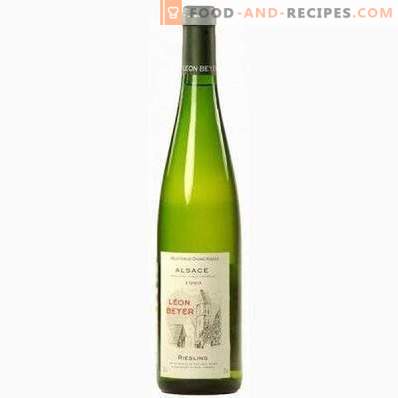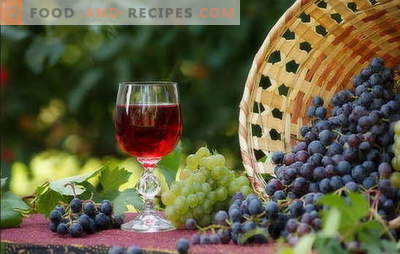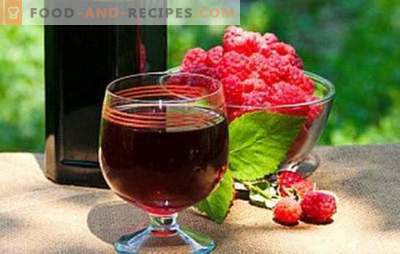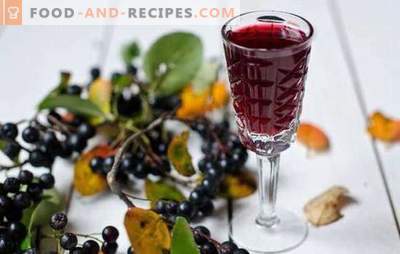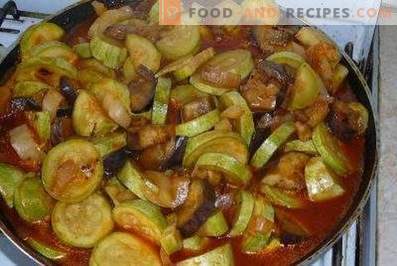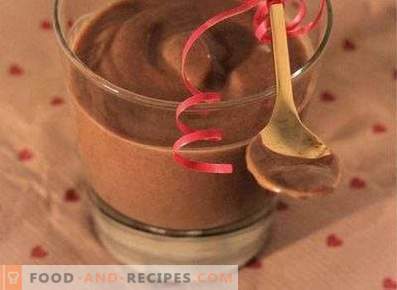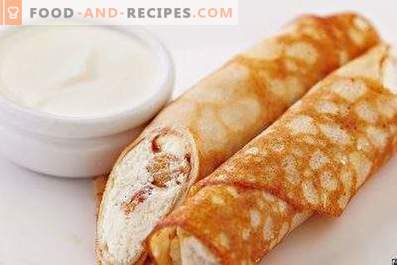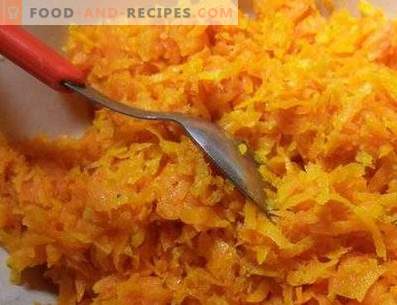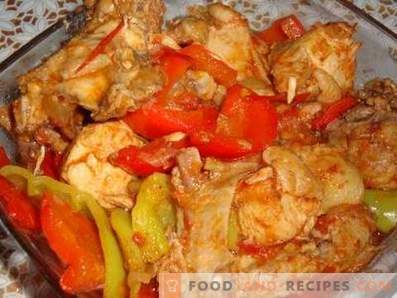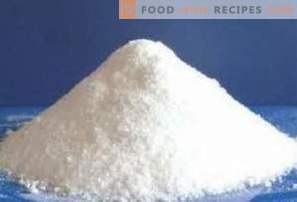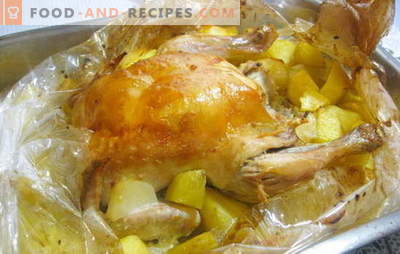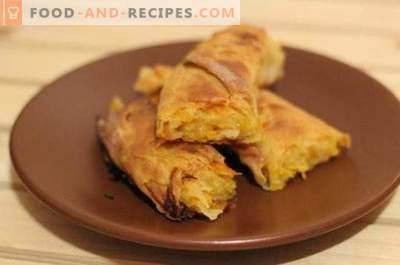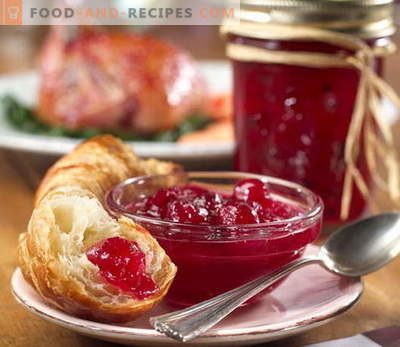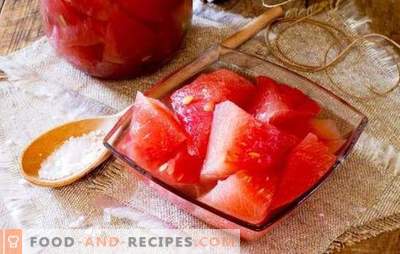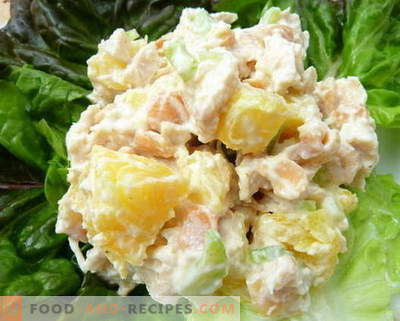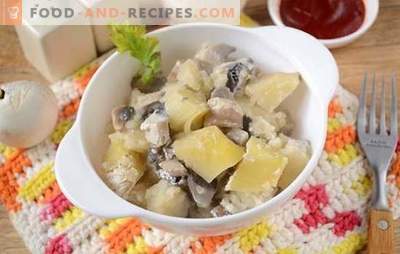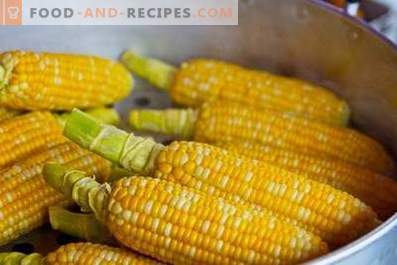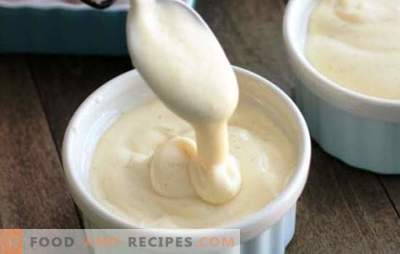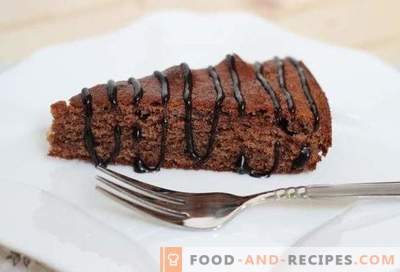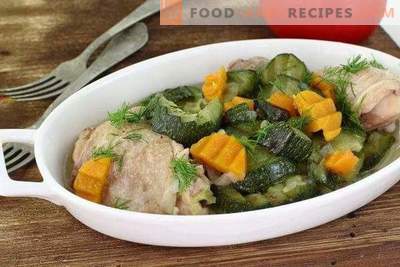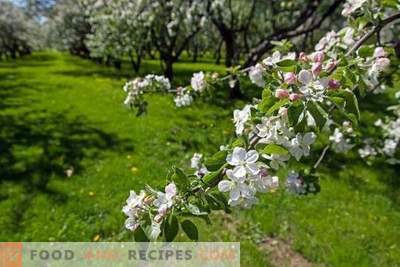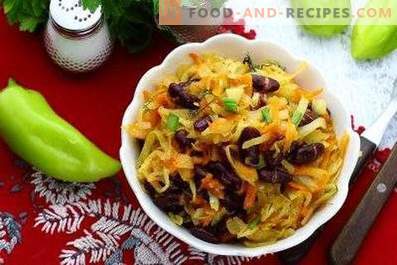
The people of the grapes of light varieties are called the solar berry, and it is not by chance - clusters, which have absorbed the energy of the sun, as if glowing from the inside.
People who are engaged in winemaking at home, know that white grape wines perfectly cool in the heat and have a more refined taste and fruit aroma than drinks from red and pink varieties.
True, they will have to tinker with their preparation, but the result is worth it! With the right choice of raw materials, compliance with technology and strict adherence to the recipe, you can get a delicious wine.
Preparation of raw materials for white grape wine
White grapes ripen later than red. To make the wine perfect - fragrant, pleasant to the taste, soft - the berries should be slightly over-ripe, but within reasonable limits. If you perederat grapes on the vine, then instead of an excellent drink you can get an unsuccessful wine with a not quite intelligible taste. It is worth considering that if the climate is very hot and arid, then it is better to harvest the crop in advance, let the berries be slightly unripe.
If purchased grapes are used, the clusters should be carefully examined for spoilage - all berries must be healthy, even, ripe, with no signs of rotting.
The following grape varieties are most commonly used for white wine:
• “Aligote”;
• “Bianca”;
• “Riesling”;
• “Yohaniter”
• “Chardonnay”;
• “Valentine”.
Red and nutmeg varieties for white wine are not suitable, as they give the drink too much astringency.
Important: the period from the collection of raw materials to the manufacturing process should not exceed two days.
From 10 kilograms of berries, approximately 7.5 liters of juice are produced. From 1 kilogram of selected raw materials you can get a bottle of wine with a volume of 0.75 ml.
Utensils and equipment for white grape wine
Contact between grapes and metal utensils is excluded, so copper, aluminum iron pots are not suitable for cooking or for storing wine. We recommend the use of enamel, glass and wooden utensils. In recent years, winemakers use high-quality plastic containers, the advantage of which is that they are light, do not fight and are easy to clean.
Wooden barrels unpainted from the inside - ideal for making homemade white wine. They protect from sunlight, do not allow temperature fluctuations, wood microspores pass the required amount of air for the vital activity of natural yeast. In addition, the wine aged in wooden barrels has a more intense bouquet and a refined taste.
Wooden containers have a number of drawbacks - the severity, difficulty of washing and the inability to visually control the fermentation process. Before cooking, fumigate the barrels with sulfur and then dry them thoroughly.
The most commonly used glass packaging is. The advantage of bottles and cans is that you can constantly monitor the process. Disadvantages: they are easy to beat, let the sun's rays and do not let the air through, the bottle with a narrow neck is difficult to wash.
To ensure normal fermentation, it is important to create comfortable conditions and temperature conditions for it: glass containers are wrapped in warm woolen dense fabrics and placed in baskets. This procedure will avoid and whipping glassware.
The use of enamelled packaging (buckets, pots, pots) is not the best solution, but their use is allowed. The main condition - the containers should not have chips and scratches. The advantage of such dishes - it is easy to wash, the lack - the fragility of the enameled layer.
Before beginning the cooking process, wash the dishes thoroughly using baking soda.
Also required:
• wooden spatula for mixing raw materials;
• flexible hose or siphon;
• gauze or colander for straining;
• gloves or water seal.
Preparation of raw materials for white grape wine
There are many recipes for white grape wines, but the principles are the same.
The first stage is the removal of all dry and rotten berries, leaves and other debris. Some winemakers leave several branches in the raw material, claiming that they add more flavor and a little tartness to the drink. But you do not need to wash the grapes - the berries contain wild yeast of natural origin, thanks to which the drink will begin to ferment. If they are washed away, the raw materials will be spoiled. The second stage - making the wort. This is the most time-consuming process, but it is the wort that is the basis of high-quality grape wine. To do this, you need to make juice from the berries, and the contact between the juice and the skin should be kept to a minimum.
It is believed that the juice is better to produce without squeezing, the so-called method of “drift” - due to the press of berries. You can use other methods - crush with a crush, with your hands or following the example of Andriano Celentano in the film “The Taming of the Shrew” - with your feet.
Third Stage
- Settling. For wine, only juice is used, it is able to preserve the exquisite taste and aroma of grapes. However, the remnants of the peel will still fall into the wort, how not to try, as a result of which it will be cloudy. In order for the taste of the drink to not deteriorate, you need to defend the juice: pour grape liquid into the container, leave to infuse. After at least 6 hours, strain the juice with a siphon or hose into another dish.
Tanks with wine are cleaned in a cool place, for example, in the basement. In case of premature fermentation of the wort, upholding should be stopped.
- Fermentation. At this stage, you need to carefully monitor the temperature. At high temperature (above 24 degrees), the yeast dies, at low (from 18) it stops working.
The time of rapid fermentation is 6-8 days, followed by a period of quiet fermentation, which lasts 3-5 weeks.
The termination of fermentation can be determined by the following features: the clarification of the color of wine, the absence of bubbles on the surface, the appearance of sediment.
The containers should be filled no more than 2/3 of the bottle, as the wine will “play” and release carbon dioxide. In order to minimize the contact of the wort with air and at the same time create conditions for the release of carbon dioxide, the neck of the dishes should be equipped with a water trap, which can be done at home. Very often, ordinary rubber gloves are used instead.
The fourth stage - separation of the sediment. This will require additional capacity.
Step by Step:
1. Put a bottle or a barrel of wine on the table, empty containers - on the floor. 2. Insert the overflow pipe (hose) into the wine container so that it does not touch the sediment.
3. Suck out air from the other end of the hose so that fluid begins to flow. Put it in a clean empty container.
4. Squeeze the remaining residue using gauze. The filtered liquid is also poured into the wine.
After filtration, the drink is poured into pre-cooked clean and dry bottles, tightly capped and left in a cool room for a month. The optimum temperature is no more than 15 degrees. After 30 days, drink again filtered.
Sugar is not added to dry wine.
Recipe 1. Eiswein Dessert Wine, Icy
Prepared according to the original, different from the classic, recipe, the drink is distinguished by a rich, refined aroma and a pleasant mild taste. Raw materials should not be very ripe, but not green.
Ingredients:
• grapes - 10 kilograms;
• sugar - 3 kilograms.
Preparation:
1. To pick berries and put in the freezer for a day. This manipulation is the main “chip” of the recipe, so that the drink gets a luxurious taste.
2. After the set time, squeeze the berries, knead.
3. Follow the general principles of cooking wine (making wort, upholding, fermentation, filtration).
4. Strain the drink, add sugar.
Recipe 2. Table wine from white and red grapes
Ingredients:
• white and red grapes - 5 kilograms;
• sugar - at the rate of 100 g per liter of finished juice;
• wine yeast.
Preparation:
1. Enumerate raw materials, crush.
2. Transfer the pulp (crushed grapes) to the pan, heat up to 75 degrees in the container.
3. Cool and leave to infuse for three days.
4. Add wine yeast to crushed berries.
5. Capacity tightly close the lid.
6. Filter the mass.
7. Add sugar.
The maturation of wine is standard, but the process can be accelerated by pasteurizing the drink within two hours.
Recipe 3. Semi-sweet white grape wine
For this recipe will need water. It is better to use artesian water, in the absence of such an opportunity, you can use tap water for two days. Ingredients:
• grapes - 30 kilograms;
• water - 5 liters;
• sugar - 5 kilograms.
Preparation:
1. Suppress grapes, leave to ferment for 5 days.
2. Drain the juice in a clean container.
3. Pour pulp with water, cover it with sugar.
4. After three days, mix the pulp and juice.
5. Follow the standard principles of preparation (settling, fermentation, filtration).
6. Finished wine bottled.
Next, the drink must be pasteurized for 20 minutes. Wine matures 1-3 months.
Gentle semi-sweet wine has a mild vanilla aftertaste and pronounced honey notes.
White grape wine: Tricks and tips
1. The best time to pick berries is sunny weather or three days after the rain.
2. During the pressing of raw materials, the bones are not crushed.
3. Wine is stored in cold dark rooms with a humidity of 60-80%. Such conditions will protect the drink from drying out and oxidation.
4. Dry wine has a short shelf life - no more than 2 months after the final maturation.
5. Strong white wines are stored for 12-15 months.
6. Bottles of wine during storage should be in a horizontal state.
7. Grape cake after processing raw materials should not be thrown out, it can be used to make grape brew - chacha.

